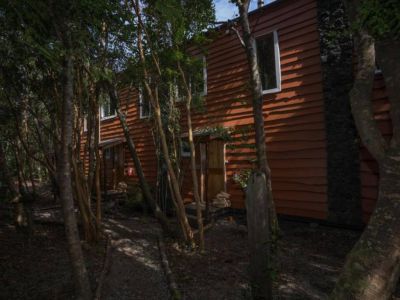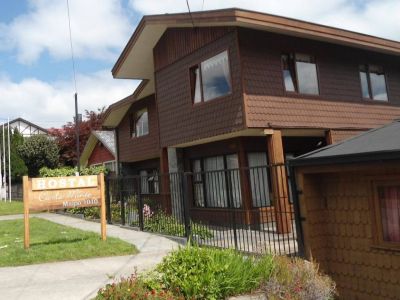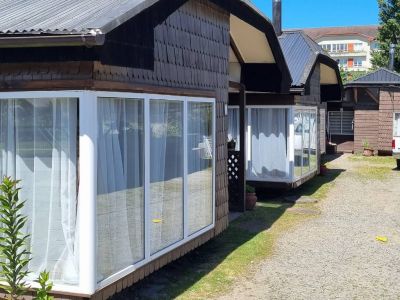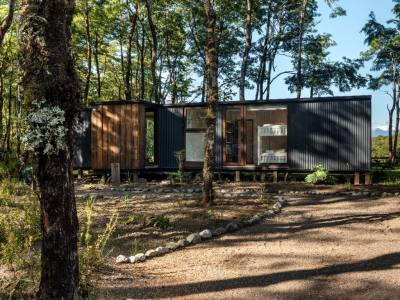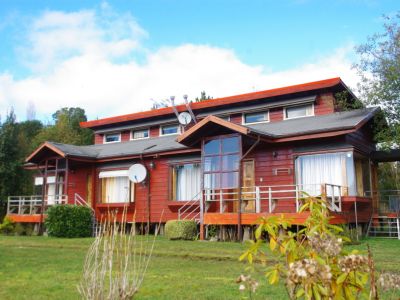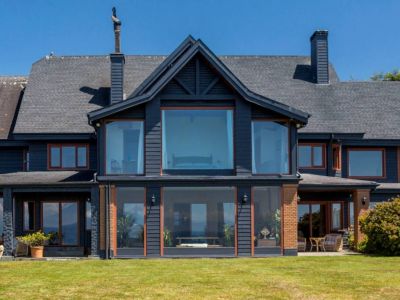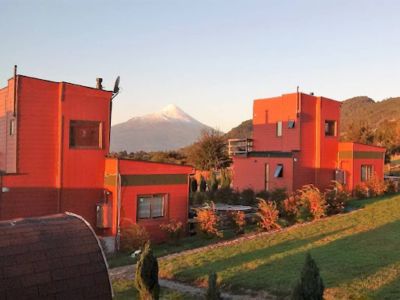
An unforgettable experience that took us along ancestral roads, teeming with history, sceneries and quietness. We crossed the Patagonian Lakes from Chile to Argentina.
We were invited to cross the lakes, to follow the mythical route of the Andean lakes which joins Chile and Argentina. The same used by the
huilliches -natives from Southern Chile- and later by the Jesuits from Chiloé over four hundred years ago. The latter left a track of legends about the region and of a past that has been reborn during this trip. This adventure promised to take us through falls, volcanos, the Valdivian rainforest and the Andean-Patagonian forest, across sites almost unexplored by man, where unspoilt nature still dares to show off all its splendor. Furthermore, we had to go back to our homeland, Argentina, and we thought it would be the most appropriate way to put an end to our trip. The lake crossing started in the city of
Puerto Varas, located on the shores of Lake Llanquihue. Considered one of the most beautiful spots in Chile, its German architecture, its typical gastronomy, the wide hotel offer and the cultural activities developed there turn this land into the tourist capital of the South of Chile. Very early, we were waiting for the bus that would take us to Petrohué, a beautiful and narrow sandy beach on the shores of Lake Todos los Santos, where we would get on board the first catamaran.

Once on the road and before reaching the terminal, we stopped to behold the Petrohué Falls. This place presents geological formations of volcanic origin that create spectacular waterfalls. Situated in the Vicente Pérez Rosales National Park, Petrohué is surrounded by sceneries with trails inviting visitors to discover ancient evergreen forests, cascades surrounded by ferns and summits offering wonderful sights of the Osorno Volcano and the Andes Mountain Range.
Facing the Silhouette of the Osorno We arrived in the Petrohué terminal and we quickly got ready to get on board the “Lagos Andinos” catamaran, which would take us sailing across Lake Todos los Santos. The modern catamaran can accommodate 308 passengers and is equipped with central heating, bar and coffee-shop, closed circuit TV and a small gift shop.

Fortunately, the weather was getting nicer at every instant. The clear sky and the bright sunshine would augur excellent photographic shots of this expedition for Mario, the photographer. As for me, I decided to watch the natural charm around us. The impressive silhouette of the Osorno Volcano stole the scene. After an hour and forty-five minutes, we arrived in Peulla. This ecological village located in the core of the Vicente Pérez Rosales National Park seems a magical place. Surrounded by ancient forests and lush vegetation, it astonishes visitors with its spectacular views. Cascades, streams, lagoons, birds and countless outdoor activities convert Peulla into a famous tourist destination. It has excellent facilities for visitors to spend a few days.

Then we had lunch. We walked around the area and, before what we had expected, we were already on another bus heading for the Chilean Customs Office in order to carry out all the necessary proceedings.
Mount Tronador: the King of the Scenery We continued traveling towards the Argentinian territory until we reached 976 m.a.s.l. We stopped to see the grand Mount Tronador and the nine glaciers on its summit. Little by little, we abandoned the Valdivian rainforest and entered the Andean-Patagonian forest. A few kilometers ahead, beautiful Lake Frías welcomed us with its green waters. At Puerto Frías, we did all the paperwork in order to enter Argentina. The light-blue and white flag would flutter on the National Gendarmery pole, welcoming us.

We boarded the “Dalca” catamaran and set sail across Lake Frías, with its mild pure deep green waters heading for Puerto Alegre. Once again, we had an impressive view of Mount Tronador, silent witness of our crossing. After about 20 minutes, we arrived in the harbor, where another bus was waiting for us in order to take us to Puerto Blest. We bordered the Frías River for three kilometers and got deep into a forest of ancient
coigües and
arrayanes until we reached the other harbor. There stands a cozy lodge, right on the shores of majestic Lake Nahuel Huapi.
Last Navigation Sunset indicated that this marvelous trip was coming to an end. We got on board “El Cóndor” catamaran, which quickly set sail for Puerto Pañuelo. Our final destination was the City of
San Carlos de Bariloche. On board “El Cóndor”, we sailed the waters of Lake Nahuel Huapi, in the core of the national park bearing the same name. For about 20 kilometers, we watched the grandeur of the landscape.

After an intense day, we arrived in Puerto Pañuelo. This is the departure point for lake tours to Victoria Island, home of a unique
arrayán forest. The guides announced that it was time for us to take the last bus, which would take us to the center of the city. Once the trip was coming to an end, we observed the beautiful Swiss architecture typical of Bariloche. This city, gifted with a matchless natural environment, offers various attractions which satisfy thousands of tourists who visit the area all through the year, thus deserving the title of capital of the Lake District in Southern Argentina. Its traditional chocolate shops, first-class hotels, museums and various restaurants that serve gastronomic delicacies are typical of the civic center. We said good-bye to the rest of the passengers who shared this unforgettable crossing with us. We had sailed across the Andes, toured the mythical Huilliche routes, visited remote, solitary and unique sites where two countries join without any frontier through the clear and pure waters that give origin to the southern lakes.


















